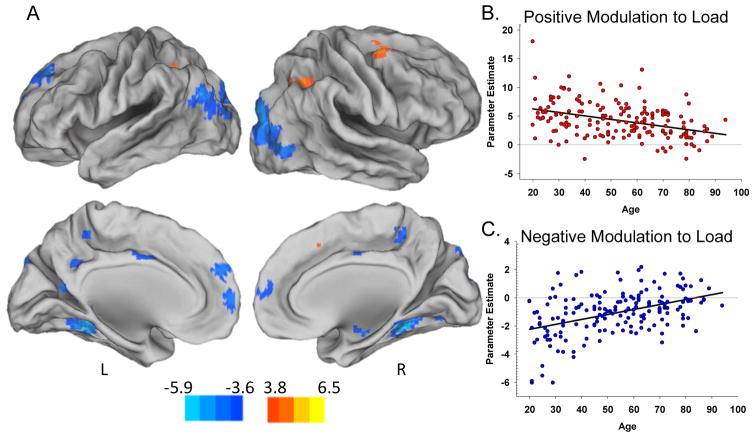Figure 3.
Effects of aging on positive and negative modulation of activation to difficulty. Increasing age was associated with decreased modulation to difficulty in both regions of positive modulation (warm colors in panel A) and regions of negative modulation (cool colors in panel A). The regions of age-reduced modulation included the rMFG, bilateral superior and inferior parietal, and left supplemental motor area in warm colors, and the superior frontal gyrus, right insula, bilateral cingulate, bilateral fusiform, bilateral parahippocampal gyrus, and lateral occipital regions in cool colors. Panel B scatterplot illustrates the weakened positive modulation effect to difficulty with increasing age, averaged across all warm clusters. Panel C illustrates weakened negative modulation effect (decreased deactivation) with increasing age, averaged across all cool clusters. Color bar indicates t-values. Abbreviations: L – Left; R – Right.

